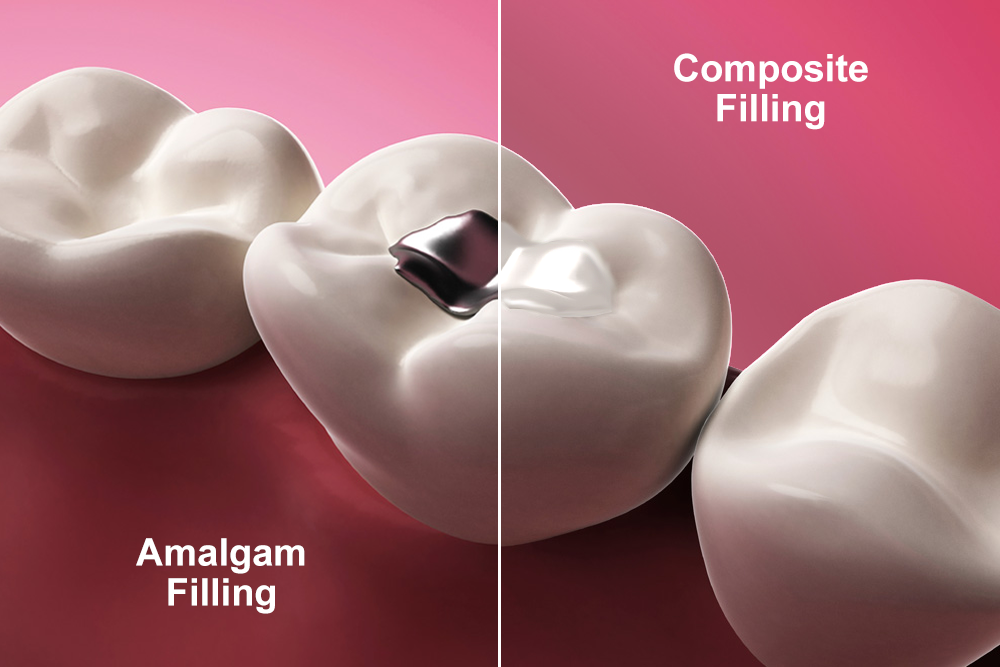Tooth-Colored Fillings
Understanding the Structure of Teeth
Teeth are made of several layers. The outer portion of the tooth is composed of enamel, which is considered one of the strongest tissues in the body. Enamel protects the more sensitive underlying layers, including dentin and the inner pulp chamber.
What is a Cavity?
Teeth are made of several layers. The outer portion of the tooth is composed of enamel, which is considered one of the strongest tissues in the body. Enamel protects the more sensitive underlying layers, including dentin and the inner pulp chamber.
Who Is Susceptible to Cavities?
Both children and adults are vulnerable to cavities. The enamel of primary teeth is softer than that of adult teeth, making these teeth more susceptible to decay. In addition, deep decay can spread from baby teeth to permanent teeth growing beneath the gums.
Tooth colored fillings are made from composite resin, a special compound of ceramic and plastic that closely mimics the shade and translucency of enamel.
With age, teeth can become worn down. Daily chewing, grinding, and biting can wear away at the enamel and result in small chips or fractures. These fissures can harbor bacteria. According to the National Institute of Dental and Craniofacial Research, 92 percent of adults between the ages of 20 and 64 have at least one cavity.
Do You Have a Cavity?
In their initial stages, cavities do not often present with noticeable symptoms. If you have more advanced stages of decay, you may notice:
- Visible pits or holes in teeth
- Brown, black, or white spots on enamel
- Pain when consuming anything hot or cold
- Difficulty chewing or biting down
- Sporadic or chronic tooth pain
Your dentist is able to identify and treat cavities in their earliest stages. As a result, it is incredibly important to schedule biannual checkups, so your dentist can help you maintain a healthy smile.
Treatable Cases
Comparing Composite to Amalgam

Composite material is color-matched to blend with the shade of your natural teeth.
Tooth Colored Filings vs. Amalgam Fillings
Steps Included with Tooth Colored Fillings
Dental fillings can be often be placed on the same day as your examination. To determine the extent of decay, your dentist can take x-rays of your teeth. These images will be used to plan treatment. Typically, you can expect:
- Anesthesia: Before treatment begins, a local anesthetic will be administered to numb the tooth and surrounding tissue. Patients who suffer from dental anxiety may benefit from stronger forms of sedation.
- Tooth preparation: Once you are comfortable, the dentist can remove unhealthy bacteria and damaged tissue.
- Composite resin application: The dentist can carefully mix the composite resin material to ensure it blends seamlessly with the color of your tooth. The dentist can then apply the material in layers for maximum strength and shine a special curing light to harden the resin in place. Application requires a delicate technique and a keen eye for detail.
- Tooth reshaping and polishing: Once the composite resin is hardened, the dentist will check for proper occlusion. Any excess resin will be trimmed and the tooth polished to reveal your new and improved smile.
With proper care, composite resin fillings can last for several years.
Cary Prosthodontics
- American College of Prosthodontics (ACP)
- Academy of Osseointegration (AO)
- International Team for Implantology (ITI)
Visit Our Top-Rated Office
Are you looking for a dental practice you can trust to provide high-quality care? Our office is regularly rated five stars for the professional and friendly care we provide to our patients. To meet with one of our dentists and start your dental crown process, fill out our online form to request your consultation. You can also contact us by calling our office, serving Cary and Raleigh, NC, at:

The Proof is in Our patients
Our Office
Monday
7:30 AM - 3:30 PM
Tuesday
7:30 AM - 3:30 PM
Wednesday
7:30 AM - 3:30 PM
Thursday
7:30 AM - 3:30 PM
Friday
Closed
